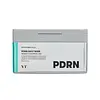What's inside
What's inside
 Key Ingredients
Key Ingredients

 Benefits
Benefits

 Concerns
Concerns

 Ingredients Side-by-side
Ingredients Side-by-side

Water
Skin ConditioningGlycerin
HumectantPolyglycerin-3
Humectant1,2-Hexanediol
Skin ConditioningHydroxyacetophenone
AntioxidantCaprylic/Capric Triglyceride
MaskingSodium Acrylate/Sodium Acryloyldimethyl Taurate Copolymer
Emulsion StabilisingSodium Polyacryloyldimethyl Taurate
Emulsion StabilisingPolyisobutene
Cocos Nucifera Fruit Extract
EmollientPolyglyceryl-10 Stearate
Skin ConditioningButylene Glycol
HumectantPolyglyceryl-10 Laurate
Skin ConditioningTrehalose
HumectantSorbitan Oleate
EmulsifyingCaprylyl/Capryl Glucoside
CleansingHydrolyzed Corn Starch
HumectantHydrogenated Phosphatidylcholine
EmulsifyingSucrose
HumectantTocopherol
AntioxidantPanthenol
Skin ConditioningSqualane
EmollientHydrogenated Lecithin
EmulsifyingSodium Lauroyl Glutamate
Cetearyl Alcohol
EmollientButyrospermum Parkii Butter
Skin ConditioningStearic Acid
CleansingSodium Hyaluronate
HumectantPanax Ginseng Root Extract
EmollientCeramide NP
Skin ConditioningCeramide Ns
Skin ConditioningCholesterol
EmollientPhytosphingosine
Skin ConditioningSodium Dna
Skin ConditioningCeramide AP
Skin ConditioningCeramide As
Skin ConditioningCeramide EOP
Skin ConditioningWater, Glycerin, Polyglycerin-3, 1,2-Hexanediol, Hydroxyacetophenone, Caprylic/Capric Triglyceride, Sodium Acrylate/Sodium Acryloyldimethyl Taurate Copolymer, Sodium Polyacryloyldimethyl Taurate, Polyisobutene, Cocos Nucifera Fruit Extract, Polyglyceryl-10 Stearate, Butylene Glycol, Polyglyceryl-10 Laurate, Trehalose, Sorbitan Oleate, Caprylyl/Capryl Glucoside, Hydrolyzed Corn Starch, Hydrogenated Phosphatidylcholine, Sucrose, Tocopherol, Panthenol, Squalane, Hydrogenated Lecithin, Sodium Lauroyl Glutamate, Cetearyl Alcohol, Butyrospermum Parkii Butter, Stearic Acid, Sodium Hyaluronate, Panax Ginseng Root Extract, Ceramide NP, Ceramide Ns, Cholesterol, Phytosphingosine, Sodium Dna, Ceramide AP, Ceramide As, Ceramide EOP
Water
Skin ConditioningMethylpropanediol
SolventGlycerin
HumectantHibiscus Syriacus Bark Extract
Skin ConditioningAcetyl Hexapeptide-8
HumectantAcetyl Tetrapeptide-2
Skin ConditioningCopper Tripeptide-1
Skin ConditioningHexapeptide-9
Skin ConditioningNonapeptide-1
Skin ConditioningOligopeptide-29
AntioxidantPalmitoyl Pentapeptide-4
Skin ConditioningPalmitoyl Tetrapeptide-7
Skin ConditioningPalmitoyl Tripeptide-1
Skin ConditioningTripeptide-1
Skin ConditioningHydrolyzed Collagen
EmollientSodium Hyaluronate
HumectantSodium Acetylated Hyaluronate
HumectantHydrolyzed Hyaluronic Acid
HumectantHydrolyzed Sodium Hyaluronate
Skin ConditioningHyaluronic Acid
HumectantHydroxypropyltrimonium Hyaluronate
Potassium Hyaluronate
Skin ConditioningSodium Hyaluronate Crosspolymer
HumectantGold
Cosmetic ColorantAdenosine
Skin ConditioningAllantoin
Skin ConditioningTrehalose
HumectantTocopheryl Acetate
AntioxidantXanthan Gum
EmulsifyingCarbomer
Emulsion StabilisingPEG-60 Hydrogenated Castor Oil
EmulsifyingTromethamine
Buffering1,2-Hexanediol
Skin ConditioningHydroxyacetophenone
AntioxidantDisodium EDTA
Parfum
MaskingWater, Methylpropanediol, Glycerin, Hibiscus Syriacus Bark Extract, Acetyl Hexapeptide-8, Acetyl Tetrapeptide-2, Copper Tripeptide-1, Hexapeptide-9, Nonapeptide-1, Oligopeptide-29, Palmitoyl Pentapeptide-4, Palmitoyl Tetrapeptide-7, Palmitoyl Tripeptide-1, Tripeptide-1, Hydrolyzed Collagen, Sodium Hyaluronate, Sodium Acetylated Hyaluronate, Hydrolyzed Hyaluronic Acid, Hydrolyzed Sodium Hyaluronate, Hyaluronic Acid, Hydroxypropyltrimonium Hyaluronate, Potassium Hyaluronate, Sodium Hyaluronate Crosspolymer, Gold, Adenosine, Allantoin, Trehalose, Tocopheryl Acetate, Xanthan Gum, Carbomer, PEG-60 Hydrogenated Castor Oil, Tromethamine, 1,2-Hexanediol, Hydroxyacetophenone, Disodium EDTA, Parfum
 Reviews
Reviews

Ingredients Explained
These ingredients are found in both products.
Ingredients higher up in an ingredient list are typically present in a larger amount.
1,2-Hexanediol is a synthetic liquid and another multi-functional powerhouse.
It is a:
- Humectant, drawing moisture into the skin
- Emollient, helping to soften skin
- Solvent, dispersing and stabilizing formulas
- Preservative booster, enhancing the antimicrobial activity of other preservatives
Glycerin is already naturally found in your skin. It helps moisturize and protect your skin.
A study from 2016 found glycerin to be more effective as a humectant than AHAs and hyaluronic acid.
As a humectant, it helps the skin stay hydrated by pulling moisture to your skin. The low molecular weight of glycerin allows it to pull moisture into the deeper layers of your skin.
Hydrated skin improves your skin barrier; Your skin barrier helps protect against irritants and bacteria.
Glycerin has also been found to have antimicrobial and antiviral properties. Due to these properties, glycerin is often used in wound and burn treatments.
In cosmetics, glycerin is usually derived from plants such as soybean or palm. However, it can also be sourced from animals, such as tallow or animal fat.
This ingredient is organic, colorless, odorless, and non-toxic.
Glycerin is the name for this ingredient in American English. British English uses Glycerol/Glycerine.
Learn more about GlycerinHydroxyacetophenone is antioxidant with skin conditioning and soothing properties. It also boosts the efficiency of preservatives.
This ingredient is not irritating or sensitizing.
Sodium Hyaluronate is hyaluronic acid's salt form. It is commonly derived from the sodium salt of hyaluronic acid.
Like hyaluronic acid, it is great at holding water and acts as a humectant. This makes it a great skin hydrating ingredient.
Sodium Hyaluronate is naturally occurring in our bodies and is mostly found in eye fluid and joints.
These are some other common types of Hyaluronic Acid:
Learn more about Sodium HyaluronateTrehalose is a disaccharide made of two glucose molecules (glucose is sugar!). Trehalose is used to help moisturize skin. It also has antioxidant properties.
As a humectant, trehalose helps draw moisture from the air to your skin. This helps keep your skin hydrated.
Due to its antioxidant properties, trehalose may help with signs of aging. Antioxidants help fight free-radical molecules, unstable molecules that may damage your skin.
In medicine, trehalose and hyaluronic acid are used to help treat dry eyes.
Some animals, plants, and bacteria create trehalose as a source of energy to survive freeze or lack of water.
Learn more about TrehaloseWater. It's the most common cosmetic ingredient of all. You'll usually see it at the top of ingredient lists, meaning that it makes up the largest part of the product.
So why is it so popular? Water most often acts as a solvent - this means that it helps dissolve other ingredients into the formulation.
You'll also recognize water as that liquid we all need to stay alive. If you see this, drink a glass of water. Stay hydrated!
Learn more about Water